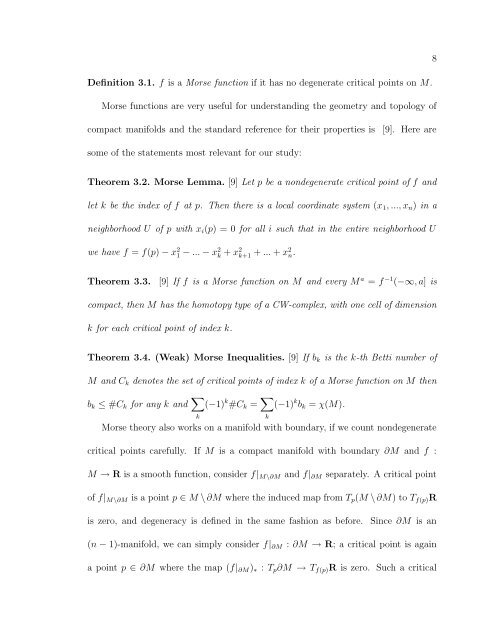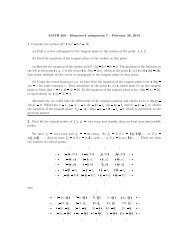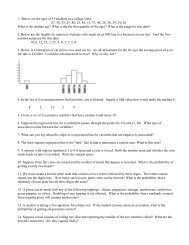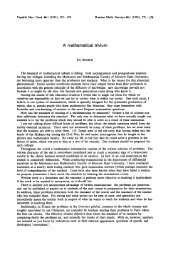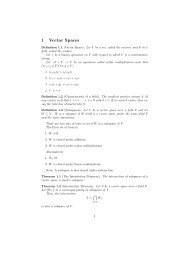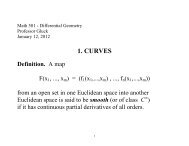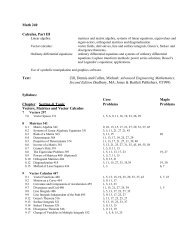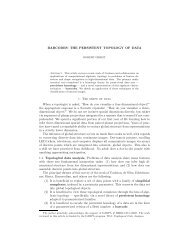MORSE THEORY AND THE GAUSS-BONNET FORMULA Alina ...
MORSE THEORY AND THE GAUSS-BONNET FORMULA Alina ...
MORSE THEORY AND THE GAUSS-BONNET FORMULA Alina ...
You also want an ePaper? Increase the reach of your titles
YUMPU automatically turns print PDFs into web optimized ePapers that Google loves.
Definition 3.1. f is a Morse function if it has no degenerate critical points on M.<br />
Morse functions are very useful for understanding the geometry and topology of<br />
compact manifolds and the standard reference for their properties is [9]. Here are<br />
some of the statements most relevant for our study:<br />
Theorem 3.2. Morse Lemma. [9] Let p be a nondegenerate critical point of f and<br />
let k be the index of f at p. Then there is a local coordinate system (x1, ..., xn) in a<br />
neighborhood U of p with xi(p) = 0 for all i such that in the entire neighborhood U<br />
we have f = f(p) − x 2 1 − ... − x 2 k + x2 k+1 + ... + x2 n.<br />
Theorem 3.3. [9] If f is a Morse function on M and every M a = f −1 (−∞, a] is<br />
compact, then M has the homotopy type of a CW-complex, with one cell of dimension<br />
k for each critical point of index k.<br />
Theorem 3.4. (Weak) Morse Inequalities. [9] If bk is the k-th Betti number of<br />
M and Ck denotes the set of critical points of index k of a Morse function on M then<br />
bk ≤ #Ck for any k and �<br />
(−1) k #Ck = �<br />
(−1) k bk = χ(M).<br />
k<br />
k<br />
Morse theory also works on a manifold with boundary, if we count nondegenerate<br />
critical points carefully. If M is a compact manifold with boundary ∂M and f :<br />
M → R is a smooth function, consider f|M\∂M and f|∂M separately. A critical point<br />
of f|M\∂M is a point p ∈ M \ ∂M where the induced map from Tp(M \ ∂M) to Tf(p)R<br />
is zero, and degeneracy is defined in the same fashion as before. Since ∂M is an<br />
(n − 1)-manifold, we can simply consider f|∂M : ∂M → R; a critical point is again<br />
a point p ∈ ∂M where the map (f|∂M)∗ : Tp∂M → Tf(p)R is zero. Such a critical<br />
8


